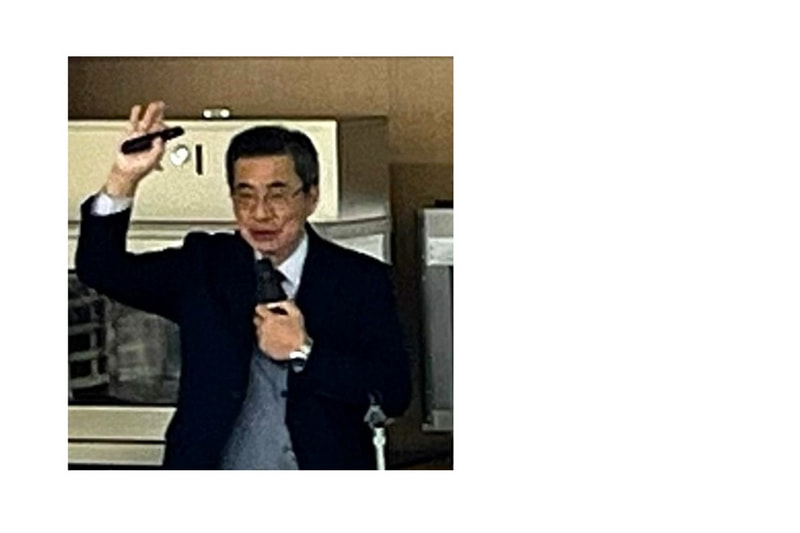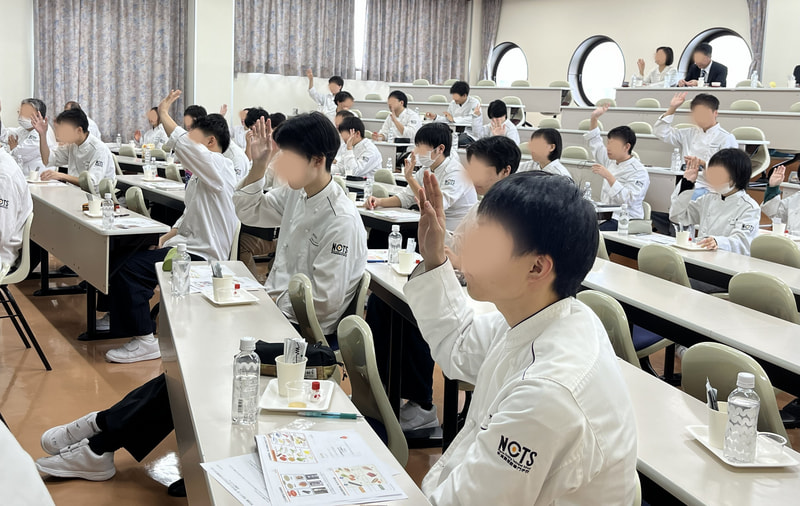Special Lecture by Chairman Nishimura at Niigata Cooking Technical School
October 2025

On October 22, a lecture on umami was held at Niigata Cooking Technical School. This special lecture has been offered annually since 2014, and this year, for the first time, Dr. Toshihide Nishimura delivered the lecture under the theme “Let’s Reconsider! The Role of Umami Substances in Enhancing Deliciousness.” Niigata Cooking Technical School is a long-established institution that produces many professionals in the culinary field each year. Approximately 45 students currently enrolled at the school participated in this year’s session.

The lecture began with the question, “Have you ever thought about what determines the deliciousness of food?” We savor food by perceiving a combination of elements—appearance, aroma, taste, texture, and temperature. Dr. Nishimura addressed the students, saying, “Many people describe the sensations in the mouth simply as ‘Taste,’ but from today, I’d like you to use the term ‘Ajiwai’ (comprehensive sensory experience) instead of the term ‘Aji’.” This shift in perspective heightened their awareness of savoring food, and they became visibly more engaged in learning through direct experience.
First, the students learned to identify the taste quality of umami through a tasting of basic taste solutions. Then, by carefully savoring dried tomatoes, they became aware of the presence of umami substances contained in the ingredients.

Next, the students learned about the koku-enhancing effect of umami substances through a tasting experience using simple miso soup. Each participant added the appropriate amount of umami substances—monosodium glutamate, disodium inosinate, and disodium guanylate—to the simple miso soup, and focused on savoring it. When asked, “ Have you noticed any changes in ‘Ajiwai’?”, many hands were raised, showing that the students clearly recognized the koku-enhancing effect of umami substances and deepened their understanding through the experience.
※Koku: A comprehensive sensory perception that can be recognized when a greater number of sensory stimuli—such as taste, aroma, and texture—are provided, resulting in a sense of complexity (depth), expansion in the mouth (intensity), and persistence (lingering aftertaste).
Finally, examples of how umami substances can be applied in cooking were introduced, including techniques used by TOP chefs to make dashi using Western ingredients, and the potential to create healthy dishes with reduced calories and salt.
Although the students had already learned about umami as one of the basic tastes in classes, their understanding deepened through a tasting-based lecture that explored the effects of umami substances and the concept of koku-sensation.
We received many comments in the post-lecture survey. Among them, several stood out: “I learned for the first time that ‘umami’ refers to the taste quality of specific substances and is different from ‘deliciousness’”; “I was surprised by how much the flavor expanded when umami substances were added to miso soup”; and “Many foreign visitors already know the word ‘UMAMI.’ As a Japanese person, I want to be able to explain it properly.”
Regarding umami and umami substances, which are essential to all cuisines—including Japanese, Western, and Chinese—, we sincerely hope that the students will apply the realization they gained through this lecture and experience to their future learning, and that they will go on to flourish as professional chefs.
